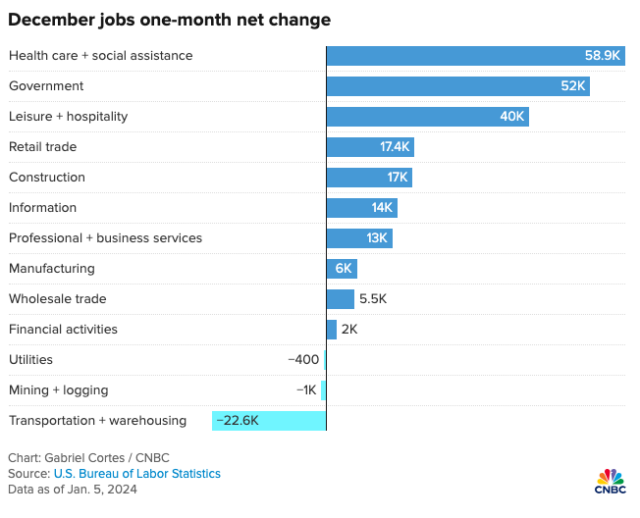In the ever-evolving landscape of the technology industry, the question on everyone’s mind is, “Will Big Tech layoffs continue in 2024?” This inquiry stems from the rapid changes and uncertainties that characterize the sector. In this comprehensive analysis, we delve into the current state of affairs, exploring the factors contributing to potential layoffs and providing insights into what the future holds for tech professionals.
The Dynamics of Big Tech Layoffs
Unraveling the Causes
The tech industry, known for its dynamism, is not immune to economic shifts and technological advancements. Layoffs in Big Tech are often influenced by a myriad of factors, such as:
- Market Trends: Fluctuations in market demand for certain technologies can lead to strategic shifts within tech companies, prompting layoffs in areas that are no longer aligned with market needs.
- Mergers and Acquisitions: The tech world is no stranger to mergers and acquisitions. When companies merge, there is often a need to streamline operations, resulting in redundancies and workforce reductions.
- Technological Evolution: The rapid pace of technological evolution can render certain skill sets obsolete. As companies strive to stay ahead, they may need to restructure their teams, leading to layoffs in favor of hiring individuals with updated expertise.
Examining Historical Patterns
To anticipate the future, we must examine the past. Historical data reveals that Big Tech layoffs have occurred periodically, often corresponding to economic downturns or industry transformations. However, the severity and frequency of these layoffs can vary widely.
The Current Landscape
Job Market Trends in 2024
As of 2024, the tech job market is exhibiting a mix of resilience and adaptation. While some companies are thriving and expanding their workforce, others are navigating challenges that may necessitate workforce adjustments.
- Remote Work Dynamics: The widespread adoption of remote work has reshaped the employment landscape. Companies are reassessing their office spaces and geographic limitations, potentially impacting staffing requirements.
- Focus on Cybersecurity: With the increasing prevalence of cyber threats, companies are placing a heightened emphasis on cybersecurity. This shift in focus may lead to a surge in demand for cybersecurity professionals, while other roles may face reevaluation.
- AI and Automation: The integration of artificial intelligence (AI) and automation technologies continues to reshape job functions. Jobs that can be automated may be subject to restructuring, while there is a growing demand for individuals skilled in AI development and implementation.
Future Projections
Navigating the Uncertainties
Predicting the trajectory of Big Tech layoffs involves navigating through uncertainties. However, some indicators can offer insights into potential trends:
- Investment in Emerging Technologies: Companies investing in emerging technologies such as blockchain, quantum computing, and advanced robotics are likely to experience growth, potentially offsetting the need for significant layoffs.
- Strategic Workforce Planning: Tech companies that engage in strategic workforce planning, aligning their human resources with long-term goals, are better positioned to adapt to industry changes without resorting to mass layoffs.
- Government Policies and Economic Conditions: External factors, such as government policies and overall economic conditions, play a crucial role in shaping the job market. Tech companies may be influenced by regulatory changes or economic incentives that impact their staffing decisions.
Supporting Remaining Employees After Layoff: A Guide

Deciding to lay off employees is never easy for any employer, and its repercussions can be deeply felt by the remaining staff. To uphold morale and sustain productivity, employers must extend support to their existing workforce during this challenging transition. Explore the following strategies to foster a positive and empathetic work environment post-layoff.
Recognize the Work-Life Connection: It’s essential to understand that employees often form close bonds with their colleagues, and the departure of a co-worker can elicit feelings of grief and anger similar to losing a friend. Acknowledge the absence of former colleagues and express empathy towards the emotions of the remaining employees. Encourage them to maintain connections with their ex-colleagues while reassuring them that management is actively providing job-search support.
Be Open and Communicative: Layoffs can erode trust between remaining employees and the management, potentially undermining the company’s cohesion. Establish open lines of communication to address any questions or concerns employees may have. Transparency about the reasons behind downsizing is crucial, as it prevents employees from being left in the dark. By understanding the decisions made to ensure the company’s stability and future success, employees can rebuild their trust in the organization.
Highlight Employee Engagement: The loss of colleagues may lead to distraction or concerns among employees about their job security. This transitional period after layoffs presents an opportune time to prioritize employee engagement and retention strategies. Connecting employees‘ roles to the overarching purpose of the company can help remind them of the bigger picture, fostering a sense of purpose and commitment.





